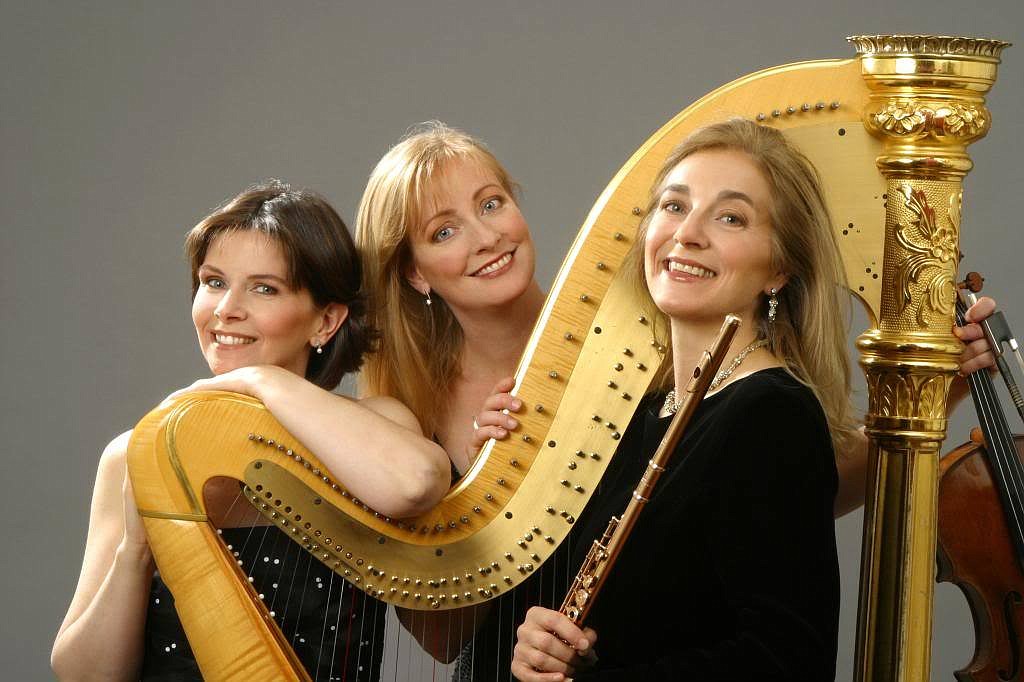- April 25, 2024
-
-
Loading

Loading

Les Amies almost named themselves WOW, to stand for Wonderful Overworked Women but, being such good friends, flutist Carol Wincenc, violist Cynthia Phelps and harpist Nancy Allen settled on Trio Les Amies. But a rose by any other name is still "Wow," and this trio of stunning artists — Wincenc is an internationally renowned soloist and chamber musician, Phelps is principal violist of the New York Philharmonic and Allen is principal harp of that illustrious orchestra — wowed the audience this weekend at the Historic Asolo with a beautiful, mostly French program.
They opened with the gentle, hypnotic sounds of Ibert in his Deux Interludes, followed by the composer’s well-known “Entr’acte,” a rippling, exciting piece that showed off Les Amies’ virtuosity. That was followed by a short excursion to England for the Elegiac Trio by Sir Arnold Bax, a work that contrasted the richness of the viola with the mellowness of the flute, with the harp acting as a rippling buttress.
Ravel’s “Sonatine en Trio,” sounding very much like a retrograde “Mother Goose” melody (by the same composer, of course), was where the true colors of each instrument erupted, with Wincenc, Phelps and Allen demonstrating their individual instrument’s affects, yet – much to their musical credit – blending their sounds like a wash of impressionism. This piece was originally written for piano solo, but we learned, through the well-documented program notes that were introduced charmingly by the members of Les Amies (who speak as well as they play), that it was Carlos Salzedo, the brilliant harpist, pedagogue and harp designer, who’d arranged this work for trio. And, after seeing what Salzedo had done, Ravel is said to have asked, “Now, why didn’t I think of that?” (We have to add that in this work, there’s a precursor of a line from Gershwin’s “Porgy and Bess.” It would be interesting to know, since Gershwin’s opera came a few decades after the Ravel piece, whether that was a coincidence or a tip-of-the-musical-hat by Gershwin to Ravel.)
The Duo in C minor Opus 3, Number 1 by the classicist, Francois Devienne, may be French, but it was far from the tints and hues of the impressionistic music that would later come from the pens of Ravel, Faure and Debussy. Scored for flute and viola, it was a charming diversion that showed how music of the Impressionists was to change the musical world, forever.
It was perfectly followed by a group of pieces by Faure, starting with the beautiful and well-known song, “Apres un Reve,” transcribed for viola and harp. This, for me, was the one disappointment of the evening because, while the viola had the rich voice of a mezzo, the lifting from the piano part to the harp was jarring and percussive compared with the original. It wasn’t Allen’s fault. Her musicianship and understanding of the music were impeccable. It was the difference between the legato sound the piano can make in the partnership with the voice and the harp’s plucking, which just doesn’t fit the poetry of the song.
But Faure’s Impromptu for solo harp made up for it. Allen’s virtuosity bubbled from the instrument, harmonics sprouting from her fingers like angels’ wings and fantastic colors sparkling like a rainbow through this gorgeous work. And the “Morceau de concours” for flute and harp was exquisite.
The final work was Debussy’s Sonate for Flute, Alto et Harp, the piece, Allen explained, that brought Les Amies together in the first place. If one didn’t know better, one might think Debussy had written the Sonate for this trio of friends, because it’s like the three wonderful, overworked women who played it: jazzy, beautiful and looking ahead to making wonderful music and being even more overworked.